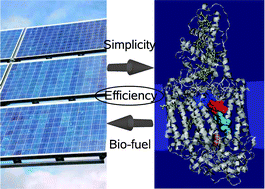The detailed balance limit of photochemical energy conversion†
Abstract
Limits and optimization of a solar energy conversion system consisting of a photochemical charge separating unit coupled to an energy

* Corresponding authors
a
Department of Chemistry and Biochemistry, Ludwig-Maximilians-Universität München, D-81377 Munich, Germany
E-mail:
Regina.de_Vivie@cup.uni-muenchen.de
b Institut für BioMolekulare Optik and Munich Center for Integrated Protein Science, Ludwig-Maximilians-Universität München, D-80538 Munich, Germany
Limits and optimization of a solar energy conversion system consisting of a photochemical charge separating unit coupled to an energy

 Please wait while we load your content...
Something went wrong. Try again?
Please wait while we load your content...
Something went wrong. Try again?
B. P. Fingerhut, W. Zinth and R. de Vivie-Riedle, Phys. Chem. Chem. Phys., 2010, 12, 422 DOI: 10.1039/B914552D
To request permission to reproduce material from this article, please go to the Copyright Clearance Center request page.
If you are an author contributing to an RSC publication, you do not need to request permission provided correct acknowledgement is given.
If you are the author of this article, you do not need to request permission to reproduce figures and diagrams provided correct acknowledgement is given. If you want to reproduce the whole article in a third-party publication (excluding your thesis/dissertation for which permission is not required) please go to the Copyright Clearance Center request page.
Read more about how to correctly acknowledge RSC content.
 Fetching data from CrossRef.
Fetching data from CrossRef.
This may take some time to load.
Loading related content
